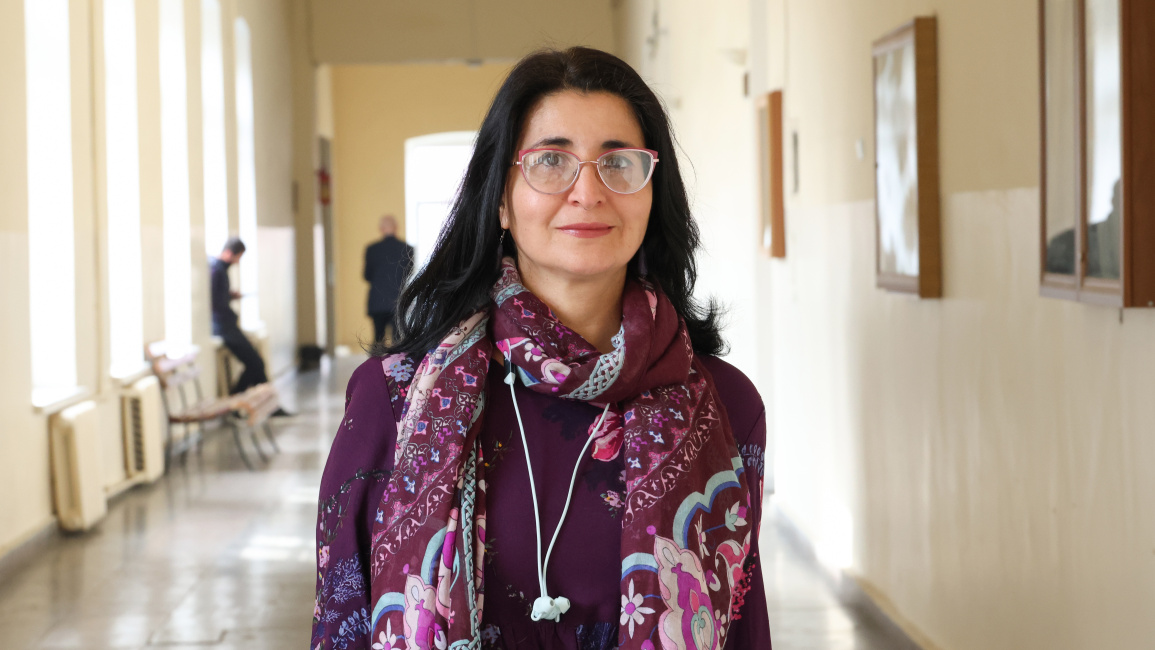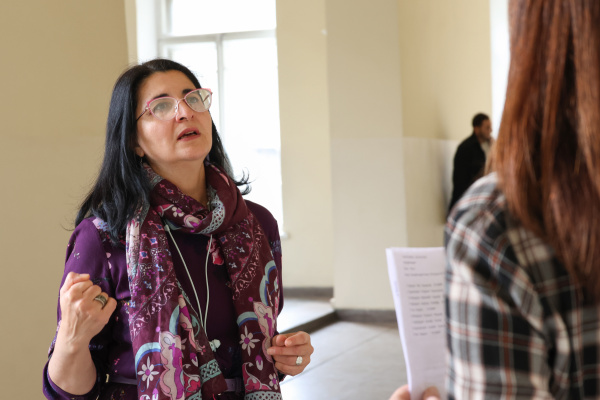November 28, 2024 | 15:25
Society
Research
Publications and scientific journals
Scientific research aimed at revitalizing former industrial cities
What changes have the industrial cities of Soviet Armenia undergone after the collapse of the USSR, and how have people's lives been altered? What goals and visions do they have for their future, living in these cities, continuing creative work, and pursuing their careers? What steps can be taken to restore these cities? These are the questions under investigation by Yulia Antonyan, Associate Professor at YSU Chair of Cultural Studies, and her research team.

Yulia Antonyan's scientific project, titled "Soviet Industrial Cities of Armenia and Their Post-Soviet Socio-Cultural Transformations", has been funded under the "Program for the Advancement of Women Leaders-2024", announced by the RA Ministry of Education, Science, Culture, and Sports (MoESCS).
Cultural anthropologist Yulia Antonyan and her team will conduct an anthropological study of the industrial cities of Soviet Armenia. Their focus is on cities that emerged in the 1950s as part of the USSR's industrialization program.
"These industrial cities were built around factories, hydropower plants, or other industrial sites, often constructed on the basis of a rural settlement or in entirely new, uninhabited areas, followed by a migration program. The people living in these cities came from various places, speaking different dialects and languages. In the USSR, after graduating from a university, people were often sent to work in a settlement for several years. They came not only from all over Armenia but also from other countries of the USSR. Some of them would get married and settle in that city, while others would return after their assignment ended," explains Yulia Antonyan.

YSU associate professor and her team are interested in understanding the logic behind the creation of these urban environments, including how people formed their identities and the factors that tied them to these cities.
"After the collapse of the Soviet Union, there was an economic crisis. During the years of independence, those cities were ignored for decades in terms of civil infrastructures—roads, healthcare, cultural, and educational facilities—which led to the disintegration of urban life. If we want to preserve these cities and recreate an urban environment there, we must first understand what initially shaped that urban environment, what kept the people there, and what might keep them in the future," Yulia Antonyan states.
She underscores that after the economic crisis post-Soviet collapse, many people began to emigrate from these cities at a rapid pace. The research will also explore how those who remained have redefined themselves. "Factories, cultural centers, and cinemas were created during Soviet times. When the factories were decommissioned, these city-forming centers gradually began to close down."
According to Yulia Antonyan, in order to revitalize these cities and make them serve the interests of Armenia, it is also necessary to understand the perspectives of the people living there—whether they are hoping for an opportunity to leave the city, or if their attachment to it is so strong that they are willing to work and create within it. It is also important to clarify what they understand by "work"—whether they envision large factory jobs, or if they are willing to start their own businesses and explore other ways of earning money. Such cities include, for example, Charentsavan, Hrazdan, Spitak, Artashat, Ararat, Alaverdi, and Kapan.
"Our research team will first explore the landscape, the locations of the factories, and their current conditions. We will identify who among the former workers of these factories remains in these cities. We will conduct interviews with both residents and local government leaders, and also organize group discussions where people talk to each other—not just answer questions from an interviewer, but engage in conversations and debates. In this way, we gather significant material, not just documentary facts, but also people's perceptions, which is equally important," Yulia Antonyan explains.
She emphasizes that urban anthropology is one of the most important areas of cultural anthropology today, as the population in rural areas is decreasing, and people are moving to cities or urban-like settlements. It is the state's responsibility to preserve the population of rural settlements.
The research team includes Haykuhi Muradyan, Assistant at YSU Chair of Cultural Studies, Lilit Gabrielyan, PhD student at YSU, archaeologist and cultural expert Hamazasp Abrahamyan, and Nelli Karapetyan, PhD student at the Institute of Archaeology and Ethnography of Armenia. The research will last for three years.
Yulia Antonyan also stresses the necessity of such research, noting that every university lecturer should also be a researcher. These studies, as "living materials," should be incorporated into lectures and presented to students with clear examples.

